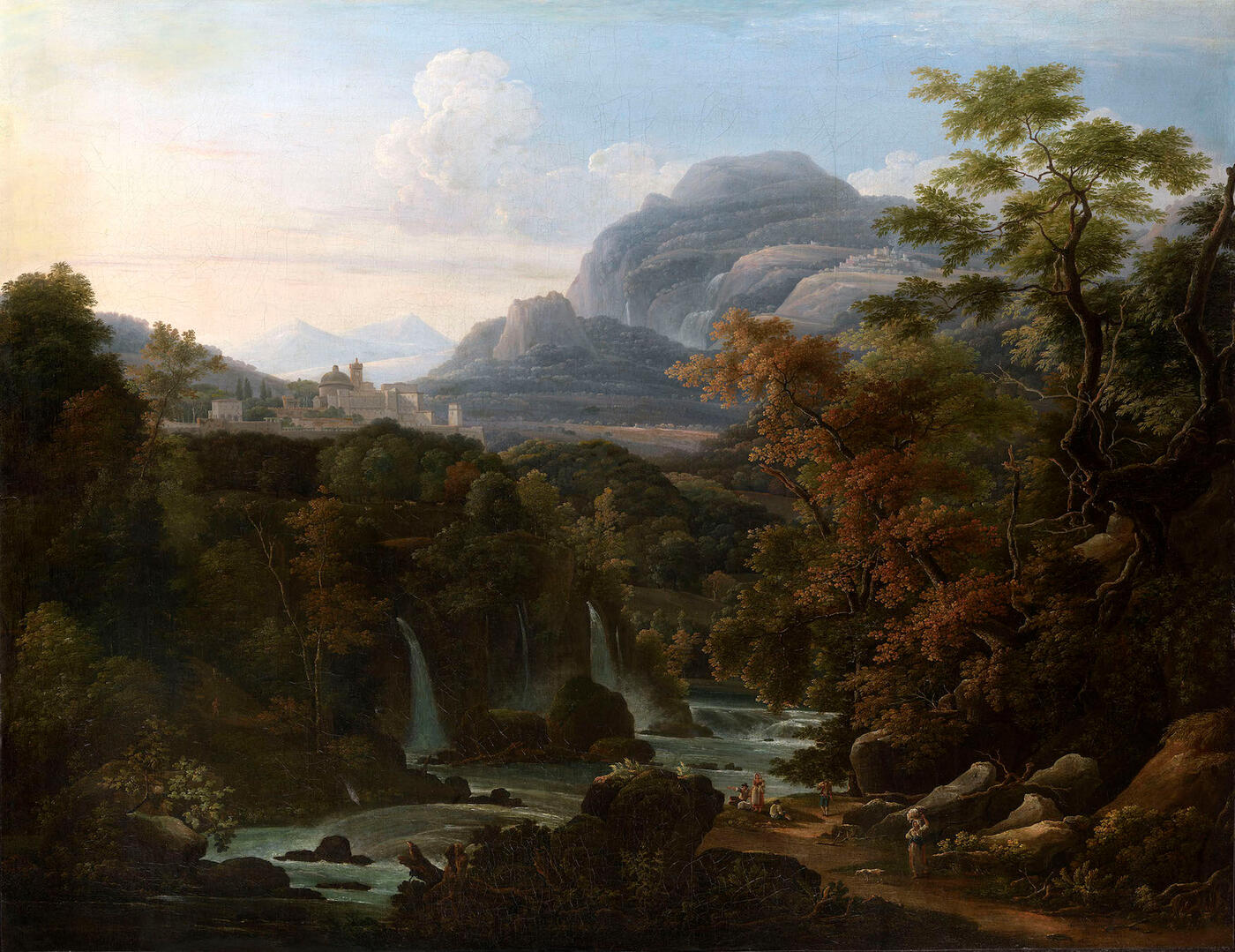2 December 2015 Russian Art Auctions
2 December 2015

36. MATVEEV, FEDOR (1758-1826)
View of the Roman Campagna, signed, inscribed “fecit. Roma” and dated 1796.
Oil on canvas, laid on metal plate, 142.5 by 183.5 cm.
600,000-900,000 GBP
Provenance: Sotheby’s London, 28 November 1979, lot 9.
Acquired at the above sale by a previous owner.
Private collection, Pasadena, California.
Authenticity of the work has been confirmed by the expert S. Podstanitsky.
View of the Roman Campagna, presented here for auction, was painted by the renowned 18th century Russian landscapist Fedor Matveev, whose work very rarely appears on the art market. According to the artist’s signature — “Fedor... Matveeff fecit Roma” — he executed it in Rome in 1796, at a time when his fame and artistic talent were at their height.
On graduating from the landscape class of the Imperial Academy of Arts, Matveev was awarded a gold medal and the right to a funded trip to Europe. He arrived in Rome in 1779, and began a life-long association with Italy. During this time, he would visit the studio of the German landscape painter Jacob Hackert, whose Italian scenes were a great success with Catherine II and her correspondents in Europe.
As early as 1799 Matveev is mentioned in a report submitted by the Russian consul in Rome to Count Kochubey, Vice-Chancellor at St Petersburg, as an artist “whose talent marked him out to his favour in the international milieu of painters living in Rome”.
Matveev devoted his talents to depictions of the Italian landscape, and his paintings were the embodiment of an ideal image that combined notional conceptions of perfection in nature with genuine impressions of the natural landscape and architectural monuments of the “land of the midday sun”. Over a period of more than 40 years the artist created a string of works depicting views of this beautiful country, in which pride of place would be held by portrayals of Rome and the outskirts of the city. Matveev painted the ancient Forum and the Coliseum, and panoramic views of the Roman Campagna and the cascades of Tivoli. Contemporaries compared his canvases to work created by the best European painters and even called him “the Russian Poussin”.
The artist often accompanied individual members of the Russian aristocracy who were on the Grand Tour to complete their education, but also travelled extensively himself in search of views and attractive landscapes. He was often in the country around Naples, saw Paestum and Pompeii, and also visited Sicily. In 1783 he set out with Prince Andrei Vyazemsky for the North of Italy, passing through Venice, Bologna, Milan and Turin before reaching the mountains of Savoy, then travelled to the Cantons of Geneva and Bern in Switzerland.
On his return to Rome, the sketches he had made on his travels became the basis for pictures that the artist painted without leaving his studio. For this reason, despite their undoubted resemblance to subjects found in nature, it is often no simple matter to determine the exact location depicted in the artist’s canvases.
Matveev’s contemporaries regarded him as an undisputed master when it came to painting water; indeed, waterfalls and flowing water are frequent subjects in his best scenes of the Roman Campagna, Sicily and Switzerland. The artist presented Alexander I with six such picturesque canvases depicting waterfalls and lakes, in gratitude for the pension he had been awarded.
There is surviving evidence that, well into old age, Matveev would travel to Tivoli, not far from Rome, to draw the natural waterfalls for which the little town is famous. In all probability, it is one of these waterfalls that is depicted in the painting at auction here. At the same time, the work’s closeness in terms of composition to Sicilian Waterfall (1814, now in the collection of the National Historical Museum of Armenia) bears witness to the well-known part played by compositional convention and the idealisation of subject matter, where its depiction is subordinated to a rigid classical formula.
View of the Roman Campagna is distinguished by the way in which spatial planes are kept strictly separate; the way the composition is organised with wings like a stage set; the obligatory incidental figures included in the scenery, which no classical landscape can do without; and the no less obligatory “backdrop” of a mountain range that encompasses the view and lends support to the eye as it surveys an endless expanse of illusion. As a rule, there is also recognisable subject matter in the distance that the artist had captured in his drawings of the natural landscape. This is arranged with virtuosity and masterfully immersed in the atmosphere and light of the overall view. A collector of Matveev’s work and one of those who most admired the artist’s talent, the litterateur Pavel Svinyin, laid particular emphasis on this quality in his landscapes: “Matveev has been in Rome more than 30 years, and in the Realm of Artists that exists there is revered as one of the best painters of landscape. His work is distinguished by a darkish tone of blue which, rather than radiating coldness, spreads, over distant objects especially, a sort of kindly veil”.
All these features of Matveev’s creative style are clearly articulated in his View of the Roman Campagna, which allows it to be placed among the artist’s best work from the end of the 18th century.
Notes on symbols:
* Indicates 5% Import Duty Charge applies.
Ω Indicates 20% Import Duty Charge applies.
§ Indicates Artist's Resale Right applies.
† Indicates Standard VAT scheme applies, and the rate of 20% VAT will be charged on both hammer price and premium.